[English] 日本語
 Yorodumi
Yorodumi- PDB-1hsb: DIFFERENT LENGTH PEPTIDES BIND TO HLA-AW68 SIMILARLY AT THEIR END... -
+ Open data
Open data
- Basic information
Basic information
| Entry | Database: PDB / ID: 1hsb | ||||||
|---|---|---|---|---|---|---|---|
| Title | DIFFERENT LENGTH PEPTIDES BIND TO HLA-AW68 SIMILARLY AT THEIR ENDS BUT BULGE OUT IN THE MIDDLE | ||||||
 Components Components |
| ||||||
 Keywords Keywords |  IMMUNE SYSTEM / IMMUNE SYSTEM /  HISTOCOMPATIBILITY ANTIGEN HISTOCOMPATIBILITY ANTIGEN | ||||||
| Function / homology |  Function and homology information Function and homology information : / : /  : / peptide antigen assembly with MHC class I protein complex / retina homeostasis / : / peptide antigen assembly with MHC class I protein complex / retina homeostasis /  regulation of membrane depolarization / T cell mediated cytotoxicity directed against tumor cell target / antigen processing and presentation of endogenous peptide antigen via MHC class I via ER pathway, TAP-dependent / positive regulation of memory T cell activation / TAP complex binding / antigen processing and presentation of exogenous peptide antigen via MHC class I ... regulation of membrane depolarization / T cell mediated cytotoxicity directed against tumor cell target / antigen processing and presentation of endogenous peptide antigen via MHC class I via ER pathway, TAP-dependent / positive regulation of memory T cell activation / TAP complex binding / antigen processing and presentation of exogenous peptide antigen via MHC class I ... : / : /  : / peptide antigen assembly with MHC class I protein complex / retina homeostasis / : / peptide antigen assembly with MHC class I protein complex / retina homeostasis /  regulation of membrane depolarization / T cell mediated cytotoxicity directed against tumor cell target / antigen processing and presentation of endogenous peptide antigen via MHC class I via ER pathway, TAP-dependent / positive regulation of memory T cell activation / TAP complex binding / antigen processing and presentation of exogenous peptide antigen via MHC class I / Golgi medial cisterna / positive regulation of CD8-positive, alpha-beta T cell activation / CD8-positive, alpha-beta T cell activation / positive regulation of CD8-positive, alpha-beta T cell proliferation / CD8 receptor binding / endoplasmic reticulum exit site / regulation of membrane depolarization / T cell mediated cytotoxicity directed against tumor cell target / antigen processing and presentation of endogenous peptide antigen via MHC class I via ER pathway, TAP-dependent / positive regulation of memory T cell activation / TAP complex binding / antigen processing and presentation of exogenous peptide antigen via MHC class I / Golgi medial cisterna / positive regulation of CD8-positive, alpha-beta T cell activation / CD8-positive, alpha-beta T cell activation / positive regulation of CD8-positive, alpha-beta T cell proliferation / CD8 receptor binding / endoplasmic reticulum exit site /  beta-2-microglobulin binding / TAP binding / beta-2-microglobulin binding / TAP binding /  protection from natural killer cell mediated cytotoxicity / antigen processing and presentation of endogenous peptide antigen via MHC class I via ER pathway, TAP-independent / antigen processing and presentation of endogenous peptide antigen via MHC class Ib / detection of bacterium / protection from natural killer cell mediated cytotoxicity / antigen processing and presentation of endogenous peptide antigen via MHC class I via ER pathway, TAP-independent / antigen processing and presentation of endogenous peptide antigen via MHC class Ib / detection of bacterium /  T cell receptor binding / positive regulation of ferrous iron binding / positive regulation of transferrin receptor binding / early endosome lumen / positive regulation of receptor binding / Nef mediated downregulation of MHC class I complex cell surface expression / DAP12 interactions / negative regulation of receptor binding / lumenal side of endoplasmic reticulum membrane / Endosomal/Vacuolar pathway / Antigen Presentation: Folding, assembly and peptide loading of class I MHC / antigen processing and presentation of exogenous protein antigen via MHC class Ib, TAP-dependent / cellular response to iron(III) ion / negative regulation of forebrain neuron differentiation / ER to Golgi transport vesicle membrane / response to molecule of bacterial origin / T cell receptor binding / positive regulation of ferrous iron binding / positive regulation of transferrin receptor binding / early endosome lumen / positive regulation of receptor binding / Nef mediated downregulation of MHC class I complex cell surface expression / DAP12 interactions / negative regulation of receptor binding / lumenal side of endoplasmic reticulum membrane / Endosomal/Vacuolar pathway / Antigen Presentation: Folding, assembly and peptide loading of class I MHC / antigen processing and presentation of exogenous protein antigen via MHC class Ib, TAP-dependent / cellular response to iron(III) ion / negative regulation of forebrain neuron differentiation / ER to Golgi transport vesicle membrane / response to molecule of bacterial origin /  regulation of erythrocyte differentiation / regulation of iron ion transport / MHC class I peptide loading complex / HFE-transferrin receptor complex / T cell mediated cytotoxicity / cellular response to iron ion / antigen processing and presentation of endogenous peptide antigen via MHC class I / positive regulation of T cell cytokine production / MHC class I protein complex / multicellular organismal-level iron ion homeostasis / positive regulation of T cell mediated cytotoxicity / peptide antigen assembly with MHC class II protein complex / negative regulation of neurogenesis / positive regulation of receptor-mediated endocytosis / MHC class II protein complex / cellular response to nicotine / recycling endosome membrane / specific granule lumen / phagocytic vesicle membrane / peptide antigen binding / positive regulation of cellular senescence / antigen processing and presentation of exogenous peptide antigen via MHC class II / Immunoregulatory interactions between a Lymphoid and a non-Lymphoid cell / Interferon gamma signaling / positive regulation of immune response / negative regulation of epithelial cell proliferation / Modulation by Mtb of host immune system / positive regulation of T cell activation / Interferon alpha/beta signaling / positive regulation of type II interferon production / antimicrobial humoral immune response mediated by antimicrobial peptide / sensory perception of smell / negative regulation of neuron projection development / E3 ubiquitin ligases ubiquitinate target proteins / tertiary granule lumen / DAP12 signaling / MHC class II protein complex binding / late endosome membrane / T cell differentiation in thymus / positive regulation of protein binding / ER-Phagosome pathway / antibacterial humoral response / iron ion transport / T cell receptor signaling pathway / protein refolding / early endosome membrane / protein homotetramerization / cellular response to lipopolysaccharide / intracellular iron ion homeostasis / defense response to Gram-negative bacterium / amyloid fibril formation / learning or memory / defense response to Gram-positive bacterium / regulation of erythrocyte differentiation / regulation of iron ion transport / MHC class I peptide loading complex / HFE-transferrin receptor complex / T cell mediated cytotoxicity / cellular response to iron ion / antigen processing and presentation of endogenous peptide antigen via MHC class I / positive regulation of T cell cytokine production / MHC class I protein complex / multicellular organismal-level iron ion homeostasis / positive regulation of T cell mediated cytotoxicity / peptide antigen assembly with MHC class II protein complex / negative regulation of neurogenesis / positive regulation of receptor-mediated endocytosis / MHC class II protein complex / cellular response to nicotine / recycling endosome membrane / specific granule lumen / phagocytic vesicle membrane / peptide antigen binding / positive regulation of cellular senescence / antigen processing and presentation of exogenous peptide antigen via MHC class II / Immunoregulatory interactions between a Lymphoid and a non-Lymphoid cell / Interferon gamma signaling / positive regulation of immune response / negative regulation of epithelial cell proliferation / Modulation by Mtb of host immune system / positive regulation of T cell activation / Interferon alpha/beta signaling / positive regulation of type II interferon production / antimicrobial humoral immune response mediated by antimicrobial peptide / sensory perception of smell / negative regulation of neuron projection development / E3 ubiquitin ligases ubiquitinate target proteins / tertiary granule lumen / DAP12 signaling / MHC class II protein complex binding / late endosome membrane / T cell differentiation in thymus / positive regulation of protein binding / ER-Phagosome pathway / antibacterial humoral response / iron ion transport / T cell receptor signaling pathway / protein refolding / early endosome membrane / protein homotetramerization / cellular response to lipopolysaccharide / intracellular iron ion homeostasis / defense response to Gram-negative bacterium / amyloid fibril formation / learning or memory / defense response to Gram-positive bacterium /  immune response / Amyloid fiber formation / lysosomal membrane / immune response / Amyloid fiber formation / lysosomal membrane /  endoplasmic reticulum lumen / external side of plasma membrane / endoplasmic reticulum lumen / external side of plasma membrane /  Golgi membrane / Golgi membrane /  signaling receptor binding / signaling receptor binding /  focal adhesion / focal adhesion /  innate immune response innate immune responseSimilarity search - Function | ||||||
| Biological species |   Homo sapiens (human) Homo sapiens (human) | ||||||
| Method |  X-RAY DIFFRACTION / Resolution: 1.9 Å X-RAY DIFFRACTION / Resolution: 1.9 Å | ||||||
 Authors Authors | Guo, H.-C. / Strominger, J.L. / Wiley, D.C. | ||||||
 Citation Citation |  Journal: Nature / Year: 1992 Journal: Nature / Year: 1992Title: Different length peptides bind to HLA-Aw68 similarly at their ends but bulge out in the middle. Authors: Guo, H.C. / Jardetzky, T.S. / Garrett, T.P. / Lane, W.S. / Strominger, J.L. / Wiley, D.C. #1:  Journal: To be Published Journal: To be PublishedTitle: Comparison of a Specificity Pocket in Three Human Histocompatibility Antigens: Hla-Aw68, Hla-A2 and Hla-B27 Authors: Guo, H.-C. / Madden, D.R. / Strominger, J.L. / Wiley, D.C. #2:  Journal: Nature / Year: 1992 Journal: Nature / Year: 1992Title: Different Length Peptides Bind to Hla-Aw68 Similarly at Their Ends But Bulge Out in the Middle Authors: Guo, H.-C. / Jardetzky, T.S. / Garrett, T.P.J. / Lane, W.S. / Strominger, J.L. / Wiley, D.C. #3:  Journal: Nature / Year: 1992 Journal: Nature / Year: 1992Title: Atomic Structure of a Human Mhc Molecule Presenting an Influenza Virus Peptide Authors: Silver, M.L. / Guo, H.-C. / Strominger, J.L. / Wiley, D.C. #4:  Journal: Cell(Cambridge,Mass.) / Year: 1992 Journal: Cell(Cambridge,Mass.) / Year: 1992Title: The Three-Dimensional Structure of Hla-B27 at 2.1 Angstroms Resolution Suggests a General Mechanism for Tight Peptide Binding to Mhc Authors: Madden, D.R. / Gorga, J.C. / Strominger, J.L. / Wiley, D.C. #5:  Journal: J.Mol.Biol. / Year: 1991 Journal: J.Mol.Biol. / Year: 1991Title: Refined Structure of the Human Histocompatibility Antigen Hla-A2 at 2.6 Angstroms Resolution Authors: Saper, M.A. / Bjorkman, P.J. / Wiley, D.C. #6:  Journal: Nature / Year: 1991 Journal: Nature / Year: 1991Title: The Structure of Hla-B27 Reveals Nonamer Self-Peptides Bound in an Extended Conformation Authors: Madden, D.R. / Gorga, J.C. / Strominger, J.L. / Wiley, D.C. #7:  Journal: Nature / Year: 1989 Journal: Nature / Year: 1989Title: Specificity Pockets for the Side Chains of Peptide Antigens in Hla-Aw68 Authors: Garrett, T.P.J. / Saper, M.A. / Bjorkman, P.J. / Strominger, J.L. / Wiley, D.C. #8:  Journal: Nature / Year: 1987 Journal: Nature / Year: 1987Title: Structure of the Human Class I Histocompatibility Antigen, Hla-A2 Authors: Bjorkman, P.J. / Saper, M.A. / Samraoui, B. / Bennett, W.S. / Strominger, J.L. / Wiley, D.C. #9:  Journal: Nature / Year: 1987 Journal: Nature / Year: 1987Title: The Foreign Antigen Binding Site and T Cell Recognition Regions of Class I Histocompatibility Antigens Authors: Bjorkman, P.J. / Saper, M.A. / Samraoui, B. / Bennett, W.S. / Strominger, J.L. / Wiley, D.C. #10:  Journal: J.Mol.Biol. / Year: 1985 Journal: J.Mol.Biol. / Year: 1985Title: Crystallization and X-Ray Diffraction Studies on the Histocompatibility Antigens Hla-A2 and Hla-A28 from Human Cell Membranes Authors: Bjorkman, P.J. / Strominger, J.L. / Wiley, D.C. | ||||||
| History |
| ||||||
| Remark 700 | SHEET SHEETS 2 AND 4 EACH HAVE ONE STRAND THAT IS BIFURCATED. THIS IS REPRESENTED BY PRESENTING THE ...SHEET SHEETS 2 AND 4 EACH HAVE ONE STRAND THAT IS BIFURCATED. THIS IS REPRESENTED BY PRESENTING THE SHEETS TWICE (DESIGNATED SHEETS SB1, SB2 AND SD1, SD2 RESPECTIVELY) WHERE THE TWO REPRESENTATIONS DIFFER IN THEIR LAST STRAND. |
- Structure visualization
Structure visualization
| Structure viewer | Molecule:  Molmil Molmil Jmol/JSmol Jmol/JSmol |
|---|
- Downloads & links
Downloads & links
- Download
Download
| PDBx/mmCIF format |  1hsb.cif.gz 1hsb.cif.gz | 91.6 KB | Display |  PDBx/mmCIF format PDBx/mmCIF format |
|---|---|---|---|---|
| PDB format |  pdb1hsb.ent.gz pdb1hsb.ent.gz | 73.7 KB | Display |  PDB format PDB format |
| PDBx/mmJSON format |  1hsb.json.gz 1hsb.json.gz | Tree view |  PDBx/mmJSON format PDBx/mmJSON format | |
| Others |  Other downloads Other downloads |
-Validation report
| Arichive directory |  https://data.pdbj.org/pub/pdb/validation_reports/hs/1hsb https://data.pdbj.org/pub/pdb/validation_reports/hs/1hsb ftp://data.pdbj.org/pub/pdb/validation_reports/hs/1hsb ftp://data.pdbj.org/pub/pdb/validation_reports/hs/1hsb | HTTPS FTP |
|---|
-Related structure data
| Similar structure data |
|---|
- Links
Links
- Assembly
Assembly
| Deposited unit | 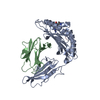
| ||||||||
|---|---|---|---|---|---|---|---|---|---|
| 1 |
| ||||||||
| Unit cell |
| ||||||||
| Atom site foot note | 1: SIDE CHAIN ATOMS OF GLU A 58, GLU A 89, ASP A 106, ARG A 108, GLN A 115, GLU A 128, HIS A 151, ASP A 196, GLN A 255, ASP B 34, GLU B 36, LYS B 41, GLU B 44, GLU B 47, LYS B 48, LYS B 58, GLU B 69, ...1: SIDE CHAIN ATOMS OF GLU A 58, GLU A 89, ASP A 106, ARG A 108, GLN A 115, GLU A 128, HIS A 151, ASP A 196, GLN A 255, ASP B 34, GLU B 36, LYS B 41, GLU B 44, GLU B 47, LYS B 48, LYS B 58, GLU B 69, LYS B 75, GLU B 77, ASN B 83, GLN B 89, AND LYS B 94 ARE DISORDERED AND HAVE OCCUPANCIES EQUAL TO 0.01 IN THIS ENTRY. 2: RESIDUES PRO A 210 AND PRO B 32 ARE CIS PROLINES. 3: LYS A 268, PRO A 269, AND LEU A 270 ARE DISORDERED, AND HAVE OCCUPANCIES EQUAL TO 0.01 IN THIS ENTRY. 4: THESE SOLVENT MOLECULES ARE LOCATED WITHIN THE PEPTIDE-BINDING SITE OF HLA-AW68. | ||||||||
| Details | THERE IS ONE COMPLEX PER ASYMMETRIC UNIT, WHICH COMPOSED OF FOUR POLYPEPTIDE CHAINS: HLA HEAVY CHAIN IDENTIFIED AS CHAIN *A* IN THIS ENTRY, BETA-2-MICROGLOBULIN IDENTIFIED AS CHAIN *B*, A MODEL OF BOUND N-TERMINAL TRI-PEPTIDE IDENTIFIED AS CHAIN *C*, A MODEL OF BOUND C-TERMINAL DI-PEPTIDE REPORTED AS RESIDUES 1001 AND 1002 IN THE ENTRY. |
- Components
Components
-Protein , 2 types, 2 molecules AB
| #1: Protein | Mass: 31151.334 Da / Num. of mol.: 1 / Source method: isolated from a natural source / Source: (natural)   Homo sapiens (human) / References: UniProt: P01891, UniProt: P04439*PLUS Homo sapiens (human) / References: UniProt: P01891, UniProt: P04439*PLUS |
|---|---|
| #2: Protein |  Beta-2 microglobulin Beta-2 microglobulinMass: 11748.160 Da / Num. of mol.: 1 / Source method: isolated from a natural source / Source: (natural)   Homo sapiens (human) / References: UniProt: P01884, UniProt: P61769*PLUS Homo sapiens (human) / References: UniProt: P01884, UniProt: P61769*PLUS |
-Protein/peptide , 1 types, 1 molecules C
| #3: Protein/peptide | Mass: 259.302 Da / Num. of mol.: 1 Source method: isolated from a genetically manipulated source |
|---|
-Non-polymers , 3 types, 272 molecules 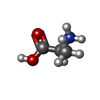
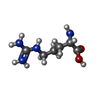



| #4: Chemical | ChemComp-ALA /  Alanine Alanine |
|---|---|
| #5: Chemical | ChemComp-ARG /  Arginine Arginine |
| #6: Water | ChemComp-HOH /  Water Water |
-Details
| Compound details | SECONDARY STRUCTURE SPECIFICATIONS WERE MADE BY USE OF THE PROCEDURE OF W. KABSCH AND C. SANDER ...SECONDARY STRUCTURE SPECIFICAT |
|---|---|
| Nonpolymer details | THE RESIDUES 1001 AND 1002 REPRESENT THE BOUND, C-TERMINAL DIPEPTIDE (ALA-ARG) |
-Experimental details
-Experiment
| Experiment | Method:  X-RAY DIFFRACTION X-RAY DIFFRACTION |
|---|
- Sample preparation
Sample preparation
| Crystal | Density Matthews: 3 Å3/Da / Density % sol: 59.06 % | ||||||||||||||||||||||||
|---|---|---|---|---|---|---|---|---|---|---|---|---|---|---|---|---|---|---|---|---|---|---|---|---|---|
Crystal grow | *PLUS Method: vapor diffusion / Details: referred to J.Mol.Biol. 186.205-210 1985 / PH range low: 6.5 / PH range high: 6.2 | ||||||||||||||||||||||||
| Components of the solutions | *PLUS
|
-Data collection
| Radiation | Scattering type: x-ray |
|---|---|
| Radiation wavelength | Relative weight: 1 |
| Reflection | *PLUS Highest resolution: 1.9 Å / Rmerge(I) obs: 0.073 |
- Processing
Processing
| Software |
| ||||||||||||||||||||||||||||||||||||||||||||||||||||||||||||
|---|---|---|---|---|---|---|---|---|---|---|---|---|---|---|---|---|---|---|---|---|---|---|---|---|---|---|---|---|---|---|---|---|---|---|---|---|---|---|---|---|---|---|---|---|---|---|---|---|---|---|---|---|---|---|---|---|---|---|---|---|---|
| Refinement | Rfactor Rwork : 0.22 / Rfactor obs: 0.22 / Highest resolution: 1.9 Å : 0.22 / Rfactor obs: 0.22 / Highest resolution: 1.9 ÅDetails: LYS A 268, PRO A 269, AND LEU A 270 ARE DISORDERED, AND HAVE OCCUPANCIES EQUAL TO 0.01 IN THIS ENTRY | ||||||||||||||||||||||||||||||||||||||||||||||||||||||||||||
| Refinement step | Cycle: LAST / Highest resolution: 1.9 Å
| ||||||||||||||||||||||||||||||||||||||||||||||||||||||||||||
| Refine LS restraints |
| ||||||||||||||||||||||||||||||||||||||||||||||||||||||||||||
| Refinement | *PLUS Highest resolution: 1.9 Å / Lowest resolution: 5.5 Å / σ(F): 3 / Rfactor obs: 0.22 | ||||||||||||||||||||||||||||||||||||||||||||||||||||||||||||
| Solvent computation | *PLUS | ||||||||||||||||||||||||||||||||||||||||||||||||||||||||||||
| Displacement parameters | *PLUS | ||||||||||||||||||||||||||||||||||||||||||||||||||||||||||||
| Refine LS restraints | *PLUS Type: x_angle_d / Dev ideal: 3.1 |
 Movie
Movie Controller
Controller


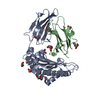
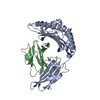

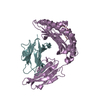
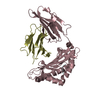
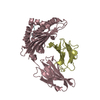
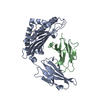

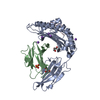

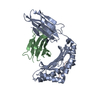

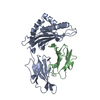
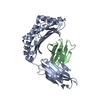

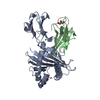
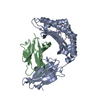
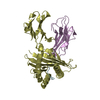

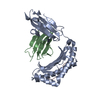
 PDBj
PDBj




